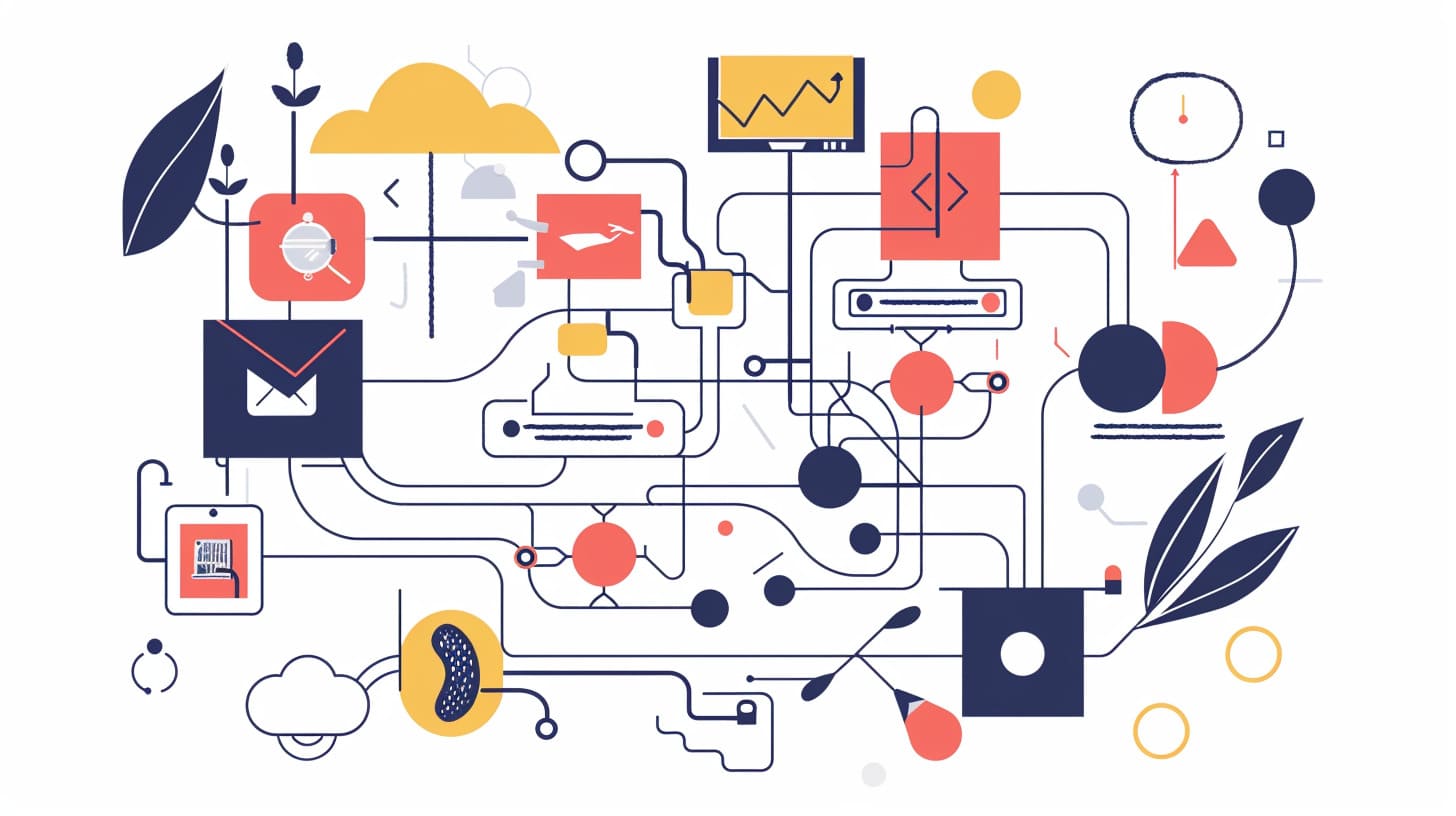Discover the Alice in Wonderland Method
Imagine stepping into a world where the usual rules don’t apply, where your creativity is unleashed, and you’re encouraged to think in ways you never thought possible. This is the essence of the Alice in Wonderland Method (AIWM), a unique approach to problem-solving and innovation inspired by Lewis Carroll’s classic, “Alice’s Adventures in Wonderland.” At its core, AIWM is about harnessing the power of imaginative thinking and applying it to real-world issues. It’s not just a fancy term; it’s a mindset that champions curiosity, playfulness, and looking at challenges from multiple angles.
This method encourages you to dive deep into the rabbit hole of your mind, uncovering fresh, unconventional solutions to problems. Edward de Bono, a pioneer in creative thinking, first introduced the idea of using Alice’s fantastical experiences as a metaphor for exploring new cognitive territories. He showcased how Alice’s journey mirrors the process of lateral thinking — stepping sideways to view problems in a new light. This approach isn’t about following a straight path but wandering through a maze of possibilities, asking “What if?” Since its inception, AIWM has found its way into various fields, from design thinking to education, proving its versatility and effectiveness. Companies and classrooms alike have adopted Alice-inspired strategies to foster environments where innovation isn’t just welcomed; it’s expected.
Studies have backed up the effectiveness of this method, illustrating its impact on enhancing creativity and problem-solving skills. Whether it’s through design projects that push the boundaries of conventional thinking or educational exercises that invite students to think differently, the Alice in Wonderland Method offers a fresh lens through which we can tackle the challenges of today and tomorrow.
In this guide, you’ll embark on a journey through the ins and outs of AIWM. From its theoretical foundations to practical applications across industries, you’ll discover how to implement this creative process in your own life and work, transforming the way you approach problems. Let’s dive in and explore the boundless potential of thinking outside the box, inspired by Alice’s adventures.
What is the Alice in Wonderland Method?

The Alice in Wonderland Method (AIWM) is more than just a nod to Lewis Carroll’s classic; it’s a creative problem-solving technique that pushes you to stretch the boundaries of your imagination. Inspired by the whimsical world of “Alice’s Adventures in Wonderland,” this method encourages you to dive deep into curiosity, playfulness, and unconventional thinking to find innovative solutions. It mixes ingredients from design thinking, lateral thinking, and mindfulness into a recipe for breaking out of the conventional mold. At the heart of AIWM lie a few core principles:
- Curiosity and Imagination: Just like Alice, you’re encouraged to view the world with wonder and think, “What if?” This principle drives you to explore endless possibilities without restraint.
- Questioning Assumptions: Why should we do things the way they’ve always been done? AIWM prompts you to challenge the status quo and consider new perspectives.
- Exploring the Absurd: Sometimes, the most outlandish ideas pave the way for breakthroughs. AIWM values these ideas as seeds for innovation.
- Collaboration: Great ideas rarely happen in isolation. This method emphasizes teamwork and leveraging diverse viewpoints to spark creativity.
- Flexibility and Adaptability: In a fast-changing world, being able to pivot and adapt your problem-solving strategies is crucial. AIWM fosters an agile mindset. By integrating these principles, AIWM has found its way into various sectors, from Google’s Moonshot Factory, where it has driven the development of groundbreaking technologies like Google Glass, to Pixar’s storytelling magic, crafting beloved characters and narratives. It even aids in educational and healthcare innovations, proving its versatility and impact across industries. This method isn’t just for the creatives or the innovators; it’s for anyone willing to approach problems with a fresh, open mindset. Whether you’re brainstorming in workshops, doodling on a mind map, or simply looking for a creative spark, the Alice in Wonderland Method offers a unique approach to thinking outside the box.
The Science Behind Creativity and the AIWM

Delving into the Alice in Wonderland Method (AIWM) and its impact on creative thinking, it’s fascinating to see how this approach aligns with what neuroscience tells us about the brain’s default mode network (DMN). This network, active when we’re daydreaming or letting our minds wander, plays a crucial role in our ability to generate innovative ideas. Research indicates that mind-wandering, an activity encouraged by AIWM, can significantly affect our creative process. For instance, a study in “Neuropsychology, Development, and Cognition” found that individuals who often let their minds wander showed greater connectivity within their DMN. Interestingly, these individuals also scored higher on creativity tests. It suggests that there’s a tangible link between the freedom to explore thoughts without a specific goal (as promoted by AIWM) and the ability to think outside the box. Further supporting this, another study in “Psychological Science” observed that participants who engaged in mind-wandering during certain tasks demonstrated not only increased DMN connectivity but also enhanced creative output. This connection between daydreaming, DMN activity, and creative output gives a scientific backing to the principles of AIWM.
By fostering an environment that encourages mind-wandering, AIWM taps into the natural workings of the brain to enhance creative thinking. The beauty of AIWM lies in its simplicity and how closely it mirrors the brain’s natural inclinations towards innovation during periods of rest or distraction. It’s a reminder that sometimes, the best way to solve a problem is to momentarily step away and allow the subconscious to take over.
In essence, AIWM champions the idea that creativity isn’t just about relentless focus but also about giving the mind space to wander. This method supports a more holistic approach to problem-solving and creative workshops, where the goal isn’t just to find an answer but to explore the vast landscape of possibilities that our minds can generate when allowed to roam free. By integrating techniques that promote DMN activity, such as mind maps and creative workshops, AIWM offers a structured yet flexible approach to innovation. It’s an invitation to think differently, inspired by the whimsical adventures of Alice and the scientific insights of modern neuroscience.
Practical Applications of AIWM in Various Sectors

The Alice in Wonderland Method, inspired by Lewis Carroll’s whimsical world, has transcended the boundaries of literature to spark innovation across multiple sectors. Imagine stepping into a realm where the ordinary rules of thought don’t apply, where you’re encouraged to think outside the box, and where innovative solutions to complex problems are born. This is the essence of AIWM, a method that champions creative thinking and problem-solving.
Business Innovations: Example of Google’s ‘Alice in Wonderland Room’ and its purpose
Google, known for its innovative ethos, took the concept of AIWM and materialized it into the ‘Alice in Wonderland Room.’ This unique space, also referred to as the ‘Think Tank’ or ‘Moonshot Factory,’ is designed to foster an environment where Google employees can unleash their creativity beyond conventional boundaries. Since its inception in 2010, it has served as a cradle for interdisciplinary collaboration, pushing the limits of creativity and productivity. The ‘Alice in Wonderland Room’ isn’t just about aesthetics; it’s a testament to the tangible benefits of embracing unconventional thinking.
Here’s how:
- Increased Creativity: It’s a sanctuary where unhindered brainstorming leads to the birth of revolutionary ideas.
- Faster Problem-Solving: By encouraging a divergence from the norm, it accelerates the ideation process, tackling problems with unmatched speed.
- Enhanced Teamwork: This space is a melting pot of diverse perspectives, cultivating a culture of rich, interdisciplinary teamwork.
- Boosted Engagement: It aligns personal passions with professional projects, amplifying motivation and engagement among Google’s workforce.
The ripple effect of Google’s initiative can be seen in other tech giants too. Apple’s ‘Blue Sky,’ Microsoft’s ‘Garage,’ IBM’s ‘Jam,’ Procter & Gamble’s ‘Connect and Develop,’ and 3M’s ‘15% Time’ are all variations on the theme, integrating AIWM principles to encourage creative workshops, thinking outside the box, and fostering an innovative culture within their realms. In essence, the Alice in Wonderland Method, with its roots in Lewis Carroll’s imaginative narrative, has proven to be more than a literary marvel—it’s a tool that drives real-world innovation and creativity across industries. Whether for brainstorming techniques, enhancing creative workshops, or devising a mind map for the next big project, AIWM encourages you to leap into the rabbit hole of possibilities, where no idea is too outlandish and the potential for innovation is limitless.
Implementing AIWM in Your Environment

Integrating the Alice in Wonderland Method (AIWM) into your work, education, or personal development routine can unlock new levels of creative thinking and problem solving. Here’s how you can get started:
In the Workplace
- Blend AIWM with Design Thinking: This fusion allows you to empathize with user needs while generating innovative solutions. Begin with understanding the user’s problem, then dive into brainstorming sessions with the AIWM approach to uncover creative solutions. 2.
- Leverage Technology: Utilize digital tools for capturing and organizing ideas. Incorporate virtual spaces to enable team brainstorming, ensuring everyone’s ideas are heard and considered.
- Practice Mindfulness: Incorporate mindfulness techniques to prepare your mind for open-ended thinking and curiosity, setting the stage for innovative problem-solving.
- Organize Workshops: Conduct AIWM workshops to equip your team with the skills needed for applying this method in daily tasks and projects.
In Education
- Classroom Activities: Use AIWM-themed activities, like a “Mad Hatter’s Tea Party”, to stimulate students’ creativity and encourage diverse perspectives.
- Support Project-Based Learning: Apply the AIWM to real-world projects, challenging students to come up with unique solutions.
- Facilitate Collaborative Learning: Encourage group projects where students can brainstorm and solve problems together using the AIWM.
- Online Learning Adaptations: Integrate AIWM into online platforms, using virtual brainstorming tools to enhance student engagement and creativity.
For Personal Development
- Foster a Curiosity Mindset: Approach everyday challenges with openness and a willingness to explore unusual solutions.
- Daily Practice: Dedicate time regularly to engage in AIWM activities, enhancing your creative problem-solving skills.
- Utilize Prompts: Stimulate your creativity with thought-provoking questions or scenarios that challenge conventional thinking.
- Keep an Idea Journal: Document your ideas, however outlandish they may seem, to develop and refine them over time.
- Collaborate: Sharing and brainstorming ideas with others can broaden your perspective and inspire innovation.
- Remain Open: Welcome all ideas during brainstorming sessions, filtering and refining them later in the process. By incorporating these strategies, you can effectively implement the Alice in Wonderland Method into various aspects of your life, fostering an environment where creative thinking and innovative problem-solving flourish.
Success Stories and Case Studies
Imagine you’re at Google, not searching, but creating in what’s dubbed the “Moonshot Factory.” Here, the Alice in Wonderland Method (AiWM) isn’t just a quirky reference; it’s a strategy to solve problems that seem as insurmountable as they are exciting. They mix ideas as disparate as, well, a rabbit with a pocket watch and a girl chasing him into a whole new world, sparking innovations that push beyond the conventional. Then, there’s Airbnb, which, when faced with the pandemic’s unprecedented challenges, didn’t just adapt; they transformed. Utilizing AiWM, they ventured into online experiences, a leap that not only cushioned them against the blow but also broadened their horizon more than they could have imagined. LEGO, a name synonymous with creativity, also stands out. Their Reimagination Workshop is a testament to AiWM’s magic, blending the fantastical with the feasible to produce lines like LEGO Mindstorms and LEGO Technic, which have captivated minds young and old.
- Google: Innovation through impossible challenges.
- Airbnb: Reinventing business models for pandemic resilience.
- LEGO: Merging play with technology for new product lines. These stories aren’t just about success; they’re about transformation, about thinking outside the box, and about the power of creative thinking when it’s let loose. Adopting AiWM, these giants didn’t just solve problems; they redefined them, proving that sometimes, looking at the world through a Lewis Carroll-inspired lens can turn the impossible into the incredible.
Embracing AIWM for Enhanced Creativity

Throughout this exploration of the Alice in Wonderland Method (AIWM), we’ve delved into how this innovative approach, inspired by Lewis Carroll’s “Alice’s Adventures in Wonderland,” has revolutionized creative thinking and problem-solving across various industries. From the financial world in New York to healthcare advancements at university hospitals, AIWM has proven its worth by encouraging professionals to think outside the box, leading to new product developments and groundbreaking medical devices. The method’s emphasis on curiosity, imagination, and non-linear thinking aligns with current trends in creativity and innovation like design thinking and agile methodologies. This alignment highlights AIWM’s relevance and effectiveness in today’s fast-paced, complex problem-solving scenarios. Thought leaders and industry experts, such as Dr. Edward de Bono and Dr. J.P. Pawliw-Fry, have endorsed AIWM for its ability to break down mental barriers and stimulate a playful, imaginative approach to challenges. By integrating AIWM in your environment, whether through creative workshops, brainstorming techniques, or leveraging mind maps, you open up a world of possibilities for innovative solutions and creative processes. It’s an invitation to challenge assumptions, explore unconventional solutions, and ultimately, think outside the box in a fun, engaging way. So, why not step into the whimsical world of Alice and embrace the Alice in Wonderland Method for enhanced creativity in your own life and work? The potential for innovation is as limitless as your imagination.


Leave a Reply